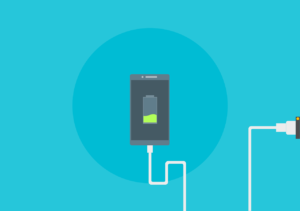It’s not always easy to know when it’s time to replace your smartphone. Some outdated phones run well for years after the end of their anticipated lifespan, while others are ready for retirement much sooner than expected. In general, however, the following signs are usually good hints that it’s time for a new device:
-
Your phone shuts down randomly.
You’re in the middle of texting with a friend or checking your e-mail when, suddenly, your screen goes black. Welcome to the random shutdown: one of the most common signs that your smartphone is past its prime. Shutdowns like this typically occur when your phone is working too hard, as many older phones do when having to cope with the heavy demands of the latest apps and features; at a certain point, the workload simply becomes too much for the phone, so it switches off to give itself a break. (This random shutdown is especially inconvenient when the phone refuses to power back up right away.)
-
The touch screen responds slowly.
If you’re finding you have to tap and swipe extra hard to get your commands to register, it’s a good sign that your touchscreen is losing responsiveness and sensitivity. Given how severely this limits your smartphone’s functionality and effectiveness, a new phone is usually the best solution.
-
The battery life is steadily decreasing.
 Your smartphone started out with good battery life, but now, even after trying every battery-boosting trick in the book, your phone can’t go a day, or even less, without needing to be charged. If this is your situation, you may want to consider a new smartphone (or at least a new battery if your smartphone is a model that allows users to replace the battery). Remember, as batteries age, their ability to hold a charge decreases, so no tactic you try will ever restore the battery to its former power.
Your smartphone started out with good battery life, but now, even after trying every battery-boosting trick in the book, your phone can’t go a day, or even less, without needing to be charged. If this is your situation, you may want to consider a new smartphone (or at least a new battery if your smartphone is a model that allows users to replace the battery). Remember, as batteries age, their ability to hold a charge decreases, so no tactic you try will ever restore the battery to its former power.
-
You don’t seem to have enough storage for anything.
Storage requirements are changing quickly, and what may have seemed like an adequate storage capacity when you first bought your smartphone now isn’t enough for all your photos, music, and apps. Unless your phone supports an external storage device you can use to expand your capacity, it could be time for a new device.
-
Current apps aren’t supported.
Today’s apps often demand a large storage capacity as well as a relatively current operating system in order to function at their best (or at all). While some apps are compatible with older devices, legacy compatibility can only extend back so far. If you’re finding that the latest versions of your favorite apps aren’t working on your smartphone, an upgrade is probably a good idea.
-
It’s difficult to plug in headphones.
One smaller problem that can be challenging to fix without a device upgrade is the headphone connection. If you’re finding that you have to plug in your headphones and then twist the plug, gently adjust it, or even hold it in a particular position in order to get audio, your headphone jack likely decided to retire early. If your smartphone supports Bluetooth, you could get around this problem by using Bluetooth headphones; otherwise, a new device is the best fix.
-
You can’t be heard during calls.
 These days, we use our phones for everything from paying bills to watching movies, but believe it or not, you can still use them to make phone calls! If, that is, your phone is still in good working condition. Microphone problems are a common sign that your smartphone may be approaching the end of its days, so if the person on the other end of the line never seems to be able to hear what you’re saying, it may be time to either commit to a text-message-only communication style or look for a new device.
These days, we use our phones for everything from paying bills to watching movies, but believe it or not, you can still use them to make phone calls! If, that is, your phone is still in good working condition. Microphone problems are a common sign that your smartphone may be approaching the end of its days, so if the person on the other end of the line never seems to be able to hear what you’re saying, it may be time to either commit to a text-message-only communication style or look for a new device.
-
You can’t find accessories anymore.
Just as newer apps eventually stop being able to run on older phones, newer accessories will, at a certain point, stop being able to fit older devices. Phone cases are an especially relevant example: manufacturers tend to make cases for the latest models only, so if your phone is getting up there in years, it may be more and more difficult to find a case for it. Smartphones used without cases are at much higher risk for damage, so if no current case (or other accessory) works with your smartphone, a full upgrade of phone and accessories may be a good idea.
-
Your screen is broken or cracked.
Broken or cracked smartphone screens are an all too common sight. But even though you might get used to a cracked screen, cracks can get worse over time, compromising how easily you can use your smartphone, or even see what it’s displaying. Instead, why not think about a new phone, or at least about replacing your screen? (And while you’re at it, you might want to look for a protective case so this won’t happen again.)

